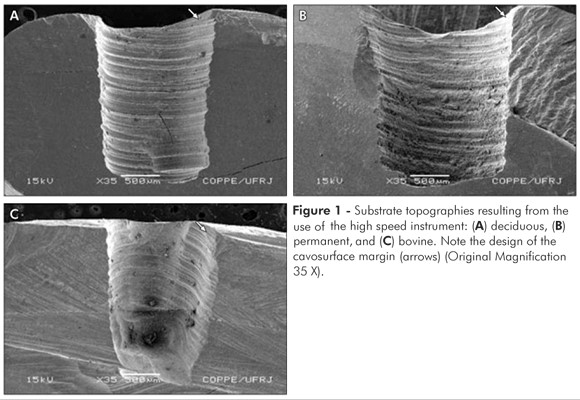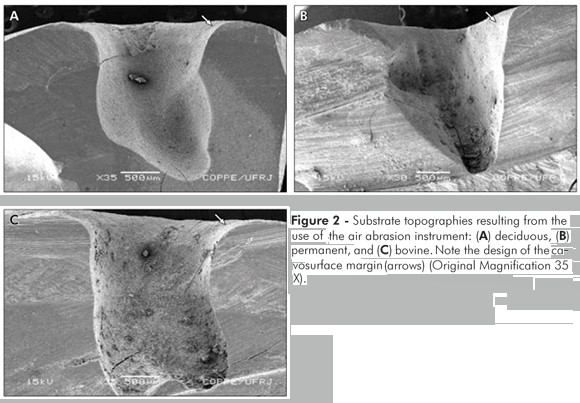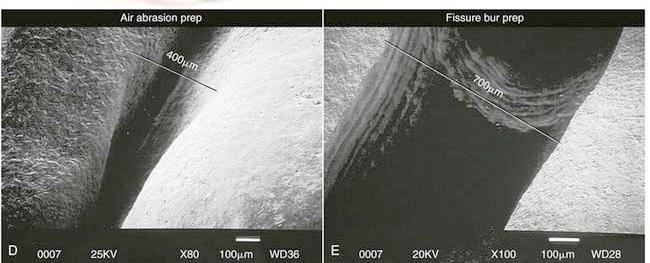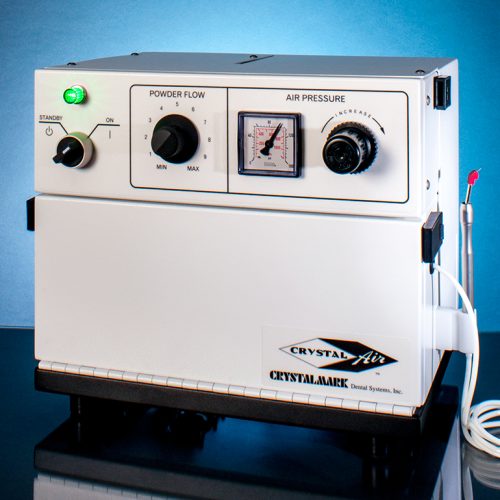Air Abrasion Benefits for Patients
From the patient’s point of view, the most important attribute is the modality’s capacity to allow painless, anesthetic-free treatment of most incipient to moderate cavity preparations. Air abrasion also eliminates the noise, heat, smell, and vibration of the dental handpiece. In one fell swoop, dentists can neutralize the biggest stumbling blocks in access to dental care by doing away with anesthesia and the negative factors associated with the high-speed handpiece. All of these variables contribute to a win-win situation for the patient and the treatment team.
Air Abrasion Benefits for Dentists
 From the dentist’s perspective, air abrasion offers many benefits. Cavity preparations generated with air abrasion are much easier to restore than they had been in the past thanks to the development of stronger and easier to use bonding systems and new composite restorative materials. The new generation of composite restoratives go hand in hand with the three dimensional configuration of the air abrasion cavity preparation.
From the dentist’s perspective, air abrasion offers many benefits. Cavity preparations generated with air abrasion are much easier to restore than they had been in the past thanks to the development of stronger and easier to use bonding systems and new composite restorative materials. The new generation of composite restoratives go hand in hand with the three dimensional configuration of the air abrasion cavity preparation. Air abrasion generates a cavity profile that has rounded internal as well as external line angles and no micro-fracturing of the enamel. These fluid internal line angles reduce the incidence of stress risers and provide a very nice cavosurface margin to finish to with direct composite restorations, thus many studies show Air Abrasion increases bond strengths significantly.
Air abrasion generates a cavity profile that has rounded internal as well as external line angles and no micro-fracturing of the enamel. These fluid internal line angles reduce the incidence of stress risers and provide a very nice cavosurface margin to finish to with direct composite restorations, thus many studies show Air Abrasion increases bond strengths significantly.
The bonding of the restoration to the tooth structure negates the need to follow conventional G.V. Black cavity design parameters; an outcome that is well established in the existing literature. This is primarily due to the restorative material being “actively” bonded to the entire tooth structure as opposed to a restorative medium that is retained by way of gross mechanical retention (read: that undercuts) such as is the case with G.V. Black amalgam fillings. Furthermore, there is no minimal thickness of restorative material necessary in order to retain its structural integrity. You can remove only that tooth structure which is compromised and leave sound tooth structure untouched. The end result is the conservation of tooth structure via conservative cavity preparations and no structural damage to the underlying enamel/dentin. The dental profession finally has at its disposal the modality with which to provide the patient with the ultimate in conservative dentistry.
In conclusion
Air Abrasion removes decay without damage to healthy tooth structure. Air Abrasion fillings are small, invisible and sealed better than any other type of restoration. Air Abrasion fillings last longer than any other restoration in dentistry today. With Air Abrasion there is no heat, no smell, no vibration and no noise! Air Abrasion fillings have superior esthetics, seal and longevity.
Applications
- Cavity preparations for composite restorations and small amalgams.
- Partial or complete removal of composite restorations.
- Re-bonding repairs of existing composite, metal and porcelain substrate restorations.
- Refining and smoothing the line angles of preparations carried out with a conventional high speed hand-piece.
- Removal of organic plugs from occlusal pit and fissures in preparation for occlusal sealants.
- Removal of surface stains and pellicle from the facial surface of teeth to be bleached for aesthetic whitening.
- Satinise metallic restorations to check for interference or occlusion.



